Recent Articles
Popular Makes
Body Types
10 Top German Sports Cars
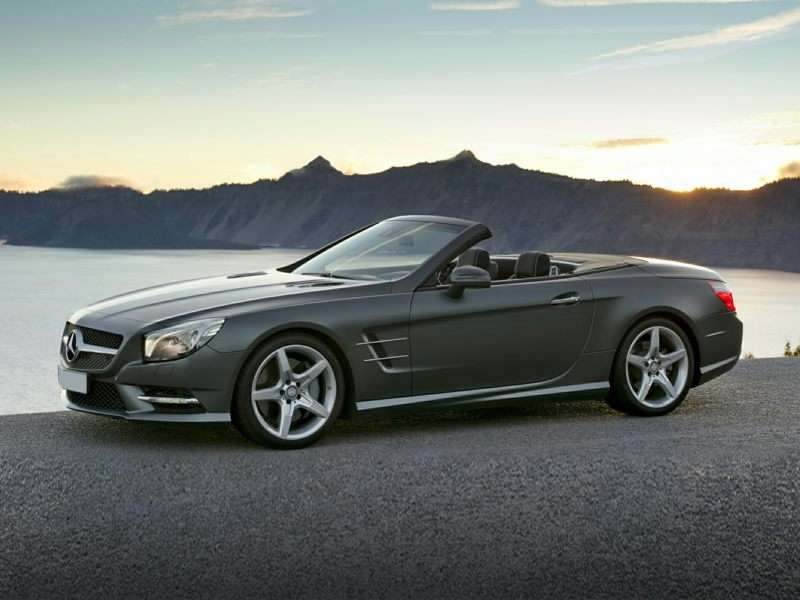
2016 Mercedes-Benz SL-Class ・ Photo by Mercedes-Benz
Generally speaking, German sports cars combine relatively subtle design cues with their outlandish performance, with a wide range of premium appointments thrown into the mix as well. That makes them ideal for drivers who want to outrun other foreign exotics and hi-po muscle cars, not necessarily attract more eyeballs with garish exteriors. Autobytel experts looked for those kinds of choices for today’s list, although with a caveat: To fill out our all-star roster of Teutonic sports cars, we’ve emphasized the dedicated athletes from each brand. As a result, variants of more traditional vehicles—regardless of their performance levels—have not been considered. But by skipping the alphabet soup of M, AMG, and RS, etc., we can better spell out the benefits of the following.
2017 Audi R8
Okay, the current crop of German sports cars does include one entry with the sort of edgy design that even the most dramatic genius, billionaire, playboy philanthropist would love: The all-new 2017 Audi R8. Long a favorite of Tony Stark, the R8 in its latest iteration—and with its 5.2-liter V10 powerplant—is the most powerful production model ever launched from the four rings brand. Indeed, in its V10 Plus configuration, the R8 is capable of rocket-like 0-60 acceleration of just 3.2 seconds, along with a terminal velocity of 205 mph—courtesy of 610 horsepower and 413 lb.-ft of torque. Also new and notable for the next-gen Plus model are its standard carbon-ceramic brakes and Audi’s first racing-shell seats for U.S. customers.
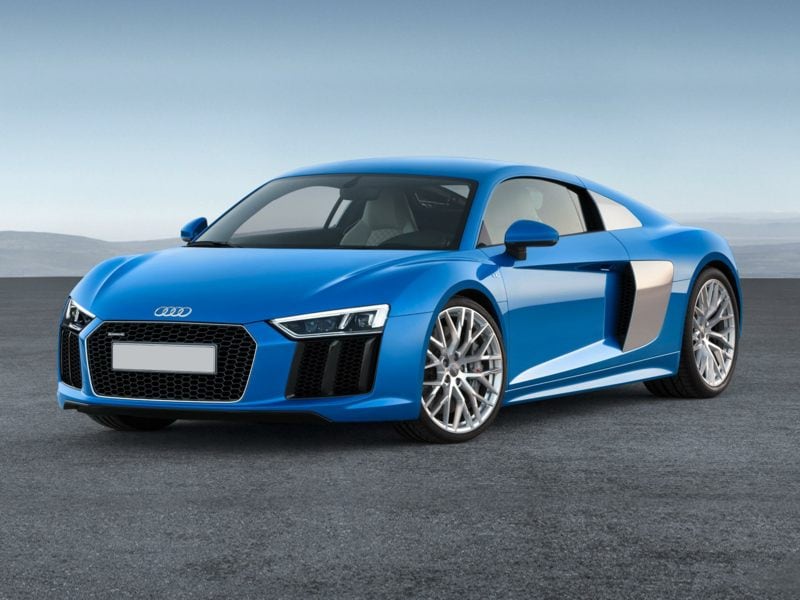
Photo by Audi
2016 Audi TT
Meanwhile, Audi’s other alternative for fans of German sports cars was brand-new for the 2016 model year, complete with its own performance enhancements. Thus, the 2016 Audi TT Coupe carries a standard 2.0-liter turbo engine that can serve up 220 horsepower, 258 lb.-ft of torque, and a 0-60 time of 5.3 seconds, and the tuned-up TTS leverages 292 horses and 280 lb.-ft of twisting power, to reduce the 0-60 sprint to 4.6 seconds. Additionally available are a new Quattro all-wheel-drive setup and magnetic ride control, for improved grip and handling capabilities, and a bevy of the brand’s favorite technologies. Among them: mobile Wi-Fi connectivity, Bang & Olufsen audio, and Audi’s 12.3-inch digital instrument panel.
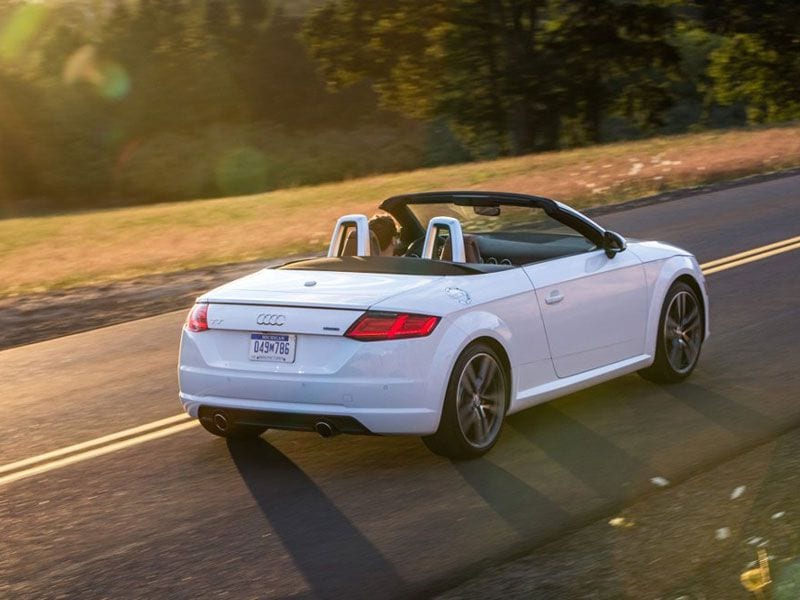
Photo by Audi
2017 Porsche 911
Continuing to set benchmarks for German sports cars is the 2017 Porsche 911, which represents the culmination of more than 50 years of 911 research and development. Moreover, it highlights our previous point about styling and performance as it relates to Deutschland’s most dynamic vehicles: The 911 Turbo S touts a profile that’s nearly identical to that of other 911 models—and has a much more traditional look than the Audi R8—yet it’s actually quicker from 0-60 than the fastest production car from the four rings company. The 911 Turbo S, with a 580 horsepower engine and the available Sport Chrono package, can blaze through that sprint in a mere 2.8 seconds; it then matches the R8 with a 205-mph top track speed.
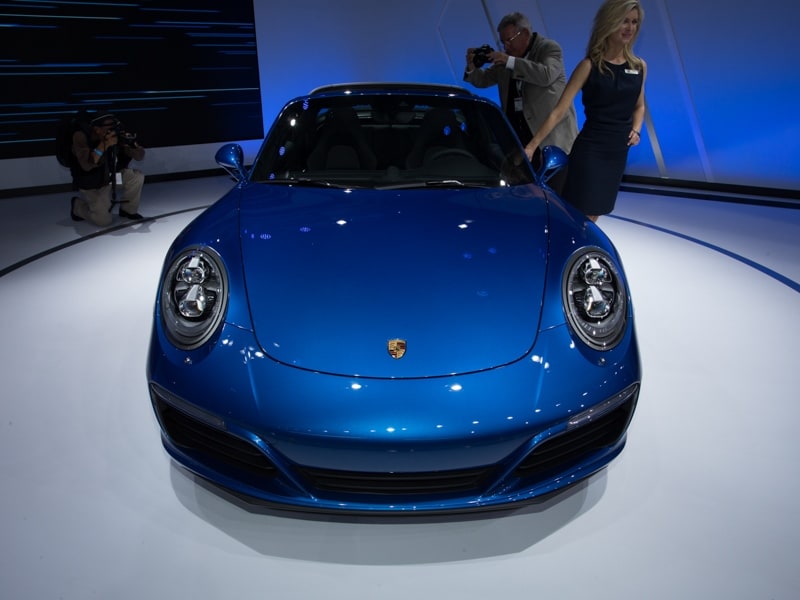
Photo by Rex Torres
2017 Porsche 718 Cayman
Porsche has been responsible for a number of classic German sports cars from previous generations, and that includes the racer that inspired the new 2017 Porsche 718 CaymanLike the original Porsche 718 that competed in motorsports series from about 1957 to 1962, the 718 Cayman is a mid-engined entry that leverages a four-cylinder, boxer-style powerplant and noticeably nimble reflexes. However, while the first 718 set out with a bit more than 140 horsepower, the current version starts with 300 horses, and the Cayman S, backed by a bigger engine, can pour out 350. Both can boast sub 5-second 0-60 performances, too, with the standard Cayman coming in at 4.9 seconds and the Cayman S completing the run in 4.4.
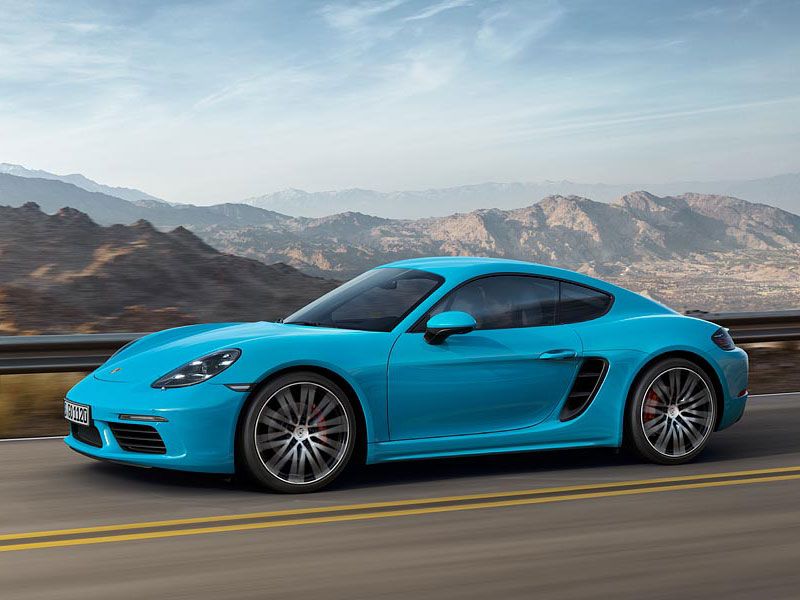
Photo by Porsche
2017 Porsche 718 Boxster
Of course, since the old-school 718 was an open-cockpit racecar, a more direct descendant may be the 2017 Porsche 718 Boxster—the roadster counterpart to the Cayman. The Boxster benefits from the same powertrains furnished by the Cayman, allowing drivers to enjoy up to 350 horsepower and 309 lb.-ft of torque from the S model’s 3.0-liter boxer engine. With that unit mounted in a midship configuration, the Boxster S can post 0-60 times as low as 4 seconds flat. Not only is that a full 0.5 seconds faster than the previous-generation version, today’s car also can push its top track speed to 177 mph—5 mph beyond last year’s milestone—making it one of the fastest convertible German sports cars.

Photo by Porsche
2016 BMW Z4
One of the few German sports cars offered only in a convertible configuration, the 2016 BMW Z4 features a particularly low seating position that allows the driver to feel more in touch with the road, plus two turbocharged engine choices so you can feel like you’re flying over that road. The entry unit is a 2.0-liter engine that yields 240 horsepower and 260 lb.-ft of torque, enough for the Z4 to zip from 0-60 in a brisk 5.5 seconds. BMW also supplies two versions of its 3.0-liter inline-six turbo for the Z4: one offers 300 horses with 300 lb.-ft. of torque; and the other dials up 335 and 332, reducing the Z4’s 0-60 sprint time to 4.8 seconds.
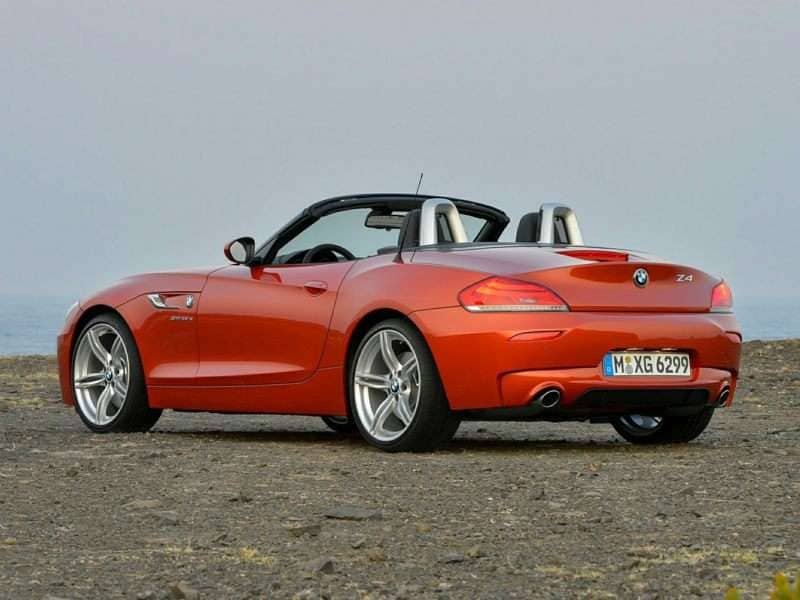
2016 BMW i8
German sports cars are well-regarded for their innovative engineering, and the 2016 BMW i8 is the perfect case in point. From the outside, it’s a sleek and aerodynamic supercar, boasting scissor-style doors and dramatic design cues. From the driver’s seat, the i8 lives up to BMW’s “Ultimate Driving Machine” reputation, thanks to 357 horsepower, 420 lb.-ft of torque, performance-oriented all-wheel drive, and the ability to surge from 0-60 in 4.2 seconds. The thing is, the i8 also happens to be a plug-in hybrid, relying on a three-cylinder TwinPower turbo engine and a BMW eDrive electric motor for its motivation. Which explains how it also manages a 15-mile all-electric driving range and a 28 mpg non-electric rating for combined travel.
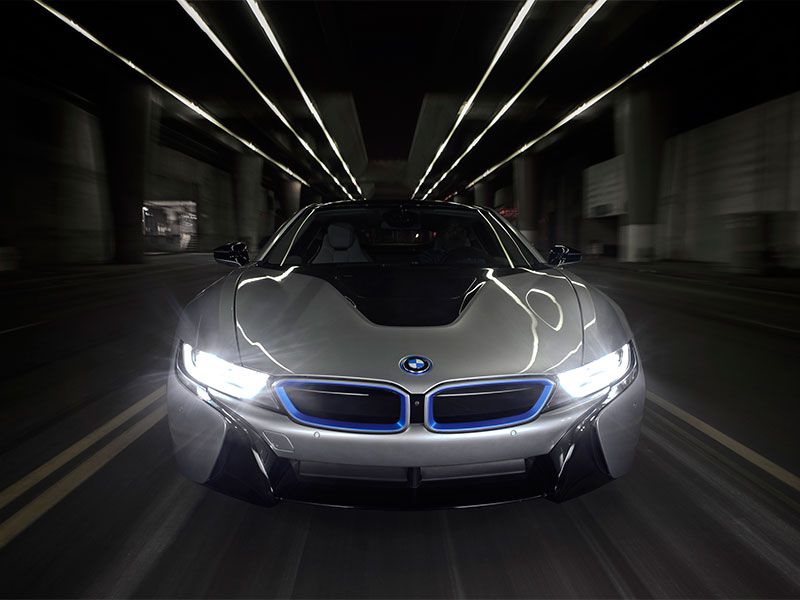
2016 Mercedes-AMG GT S
Though we said at the outset that performance-tuned, “letter” variants wouldn’t be considered as part of our German sports cars honor roll, that’s not what the 2016 Mercedes-AMG GT S is. Sure, there’s plenty of magic from Mercedes’ in-house AMG tuning shop, but the GT S was designed from the ground up as the Mercedes brand’s supercar entry, right down to its heroically powerful bi-turbo engine. Hand-assembled by a single AMG engineer, each 4.0-liter V8 can pour out 503 horsepower and 479 lb.-ft of torque. Pilots can see 0-60 acceleration of 3.7 seconds with that output, then carve the corners with an AMG adaptive suspension, hi-po carbon-ceramic brakes, and the Dynamic Plus multi-mode drive system.
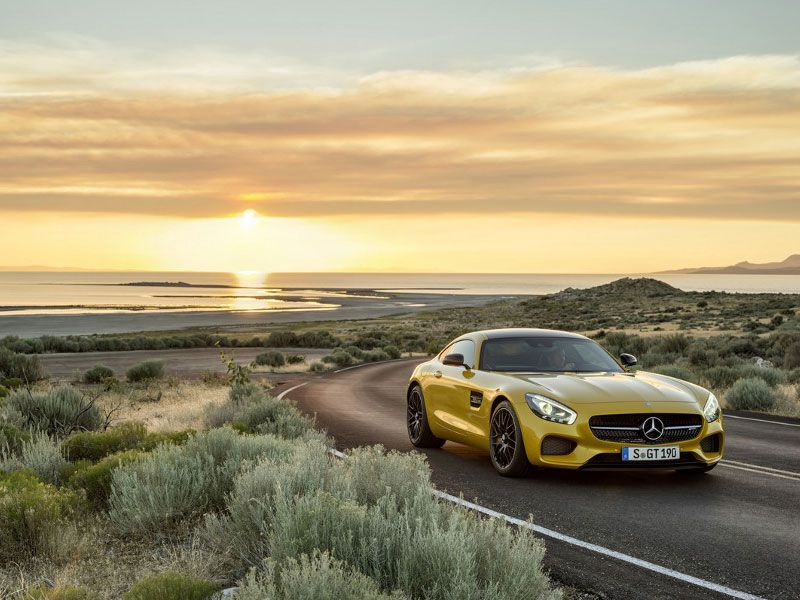
2016 Mercedes-Benz SLC Roadster
Before you dismiss the 2016 Mercedes-Benz SLC Roadster as only the convertible version of the C-Class sedan, remember that despite the undeniable mechanical similarities between the two, MB’s dynamic drop-top traces its roots back to the racy SLK—a one-time rival for German sports cars from BMW and Porsche. The SLC pays homage to its predecessor with some perky performance metrics, including a 5.8-second 0-60 capability, and it leverages a turbocharged 2.0-liter engine, which is good for 241 horsepower and 273 lb.-ft of torque, to achieve that mark.
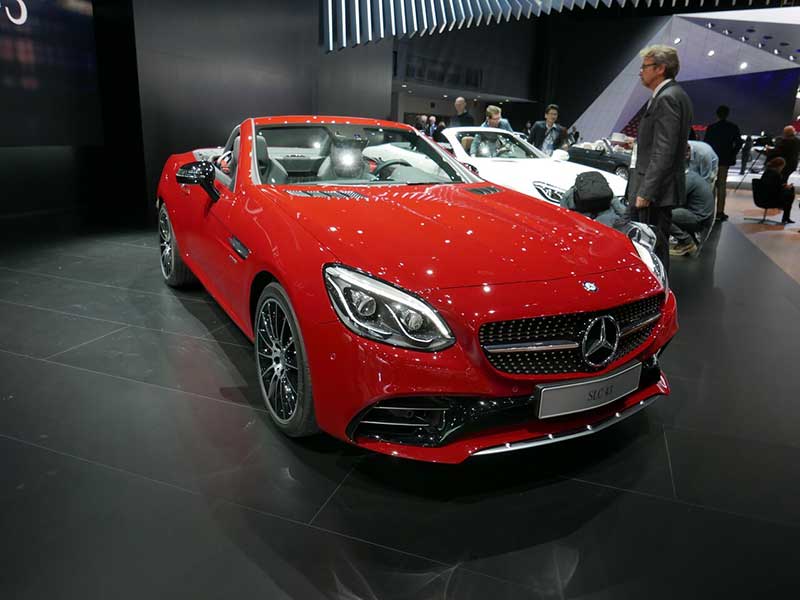
2016 Mercedes-Benz SL Roadster
Mercedes’ team of German sports cars is capped off by the 2016 Mercedes-Benz SL Roadster. MB enthusiasts of the old-school variety will recognize the “SL” designation from the iconic 300SL Gullwing coupe, but the newest roadster is a totally modern take on the brand’s approach to luxury performance, from its five-mode Dynamic Select drive system to its sophisticated power-retractable hardtop. Even with the top up, an overhead glass panel can let the sunshine in—and if it gets too bright, Magic Sky Control technology lets owners automatically darken that glass as needed. Oh, and with its 4.7-liter biturbo V8 engine delivering 449 horsepower and 516 lb.-ft of torque, the SL550 Roadster can run from 0-60 in 4.3 unforgettable seconds.
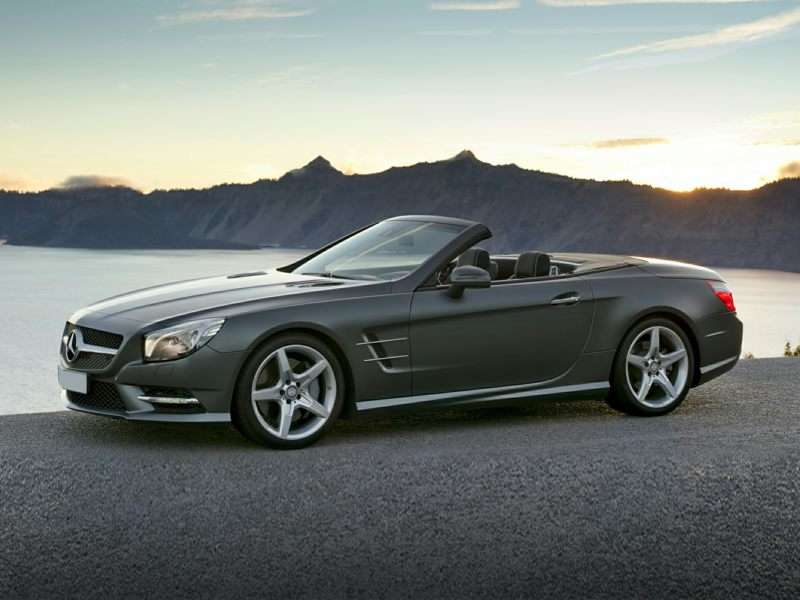
Photo by Mercedes-Benz